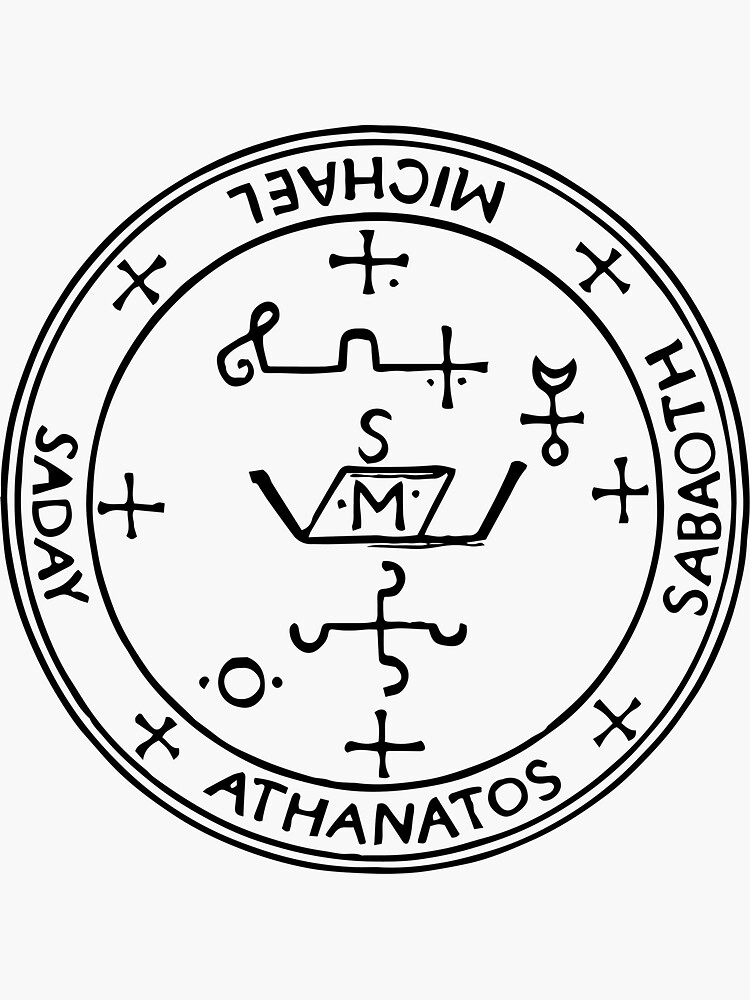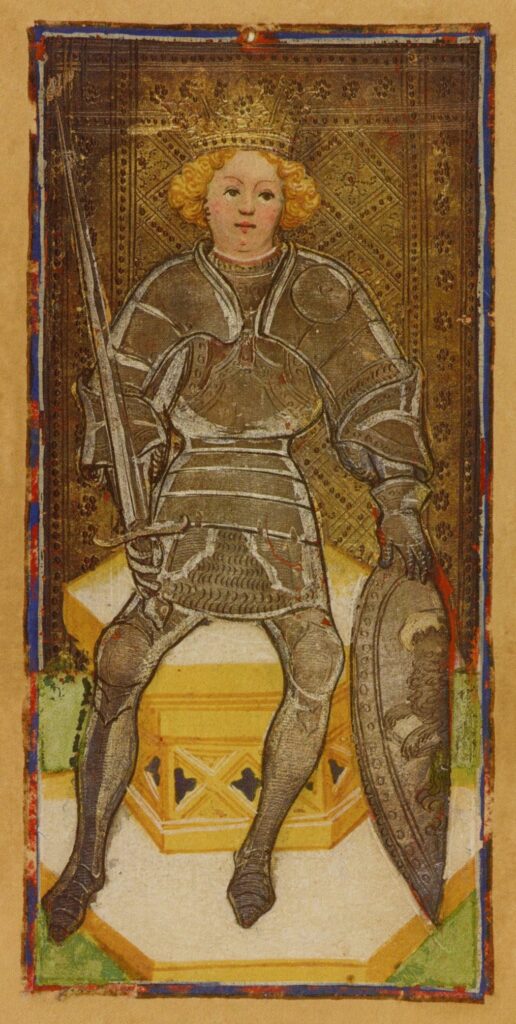Throughout the labyrinth of mystical traditions, the figure of the psychopomp emerges with a gravity that transcends mere mythic utility. Rooted in the language of passage, the psychopomp is a bridge; one who guides souls across the perilous frontiers between worlds. In the secret liturgies of the ancients, this figure does not just open doors for the dead. Instead the psychopomp guards the threshold between time and eternity, shaping the very architecture of transition, a sentinel of the crossing, whose task is custody. Within the vestments of Hermes, the lyre and the caduceus shimmer as signs of mediation; but, in the Christian, hermetic and gnostic traditions, another figure rises with the sword: the Archangel Michael, whose radiance stands sentinel at the threshold, whose lion-form is etched in the earliest texts, and whose shadow flames across the east, where dawn is born.
The soul, at the moment of departure, seeks a path that is neither mere dissolution nor blunt oblivion; it seeks guidance. The psychopomp provides this by holding open the threshold, by bearing the scales, by defending against the myriad forms of dissolution. This task, sacred and perilous, is not given to those who only dwell in light, but to those who know the contours of shadow and stand vigilant before it. In the vaults of esoteric Christianity, in the Gnostic and Kabbalistic traditions, Michael is seen not only as the general of the heavenly hosts, but as the psychopomp par excellence; the Lion at the East, the Defender of the Veil, the Guide of the Departing and the Judge of Souls. His symbolism is as ancient as the dawn, as liminal as the threshold, and as radiant as the first light that pierces the world.
This is the Michael who ought to be revealed: a figure as subtle as he is fierce, as veiled as he is triumphant; a guardian who stands at the eastern gate, sword and balance in hand, bearing the mark of the lion and the breath of the Spirit.
I. The Psychopomp: Guardian of Thresholds, Bearer of Scales
The psychopomp is the custodian of transitions. In the earliest mythologies of Sumer and Egypt, the function appears as an operative role in the sacred machinery of passage. Hermes-Mercury, Anubis, and later Charon, each bear this function: the bearing of the soul from this world into the next, the weighing of the heart, the judging of the word, the naming of the hidden.
But, with the advent of Jewish and Christian esotericism, the psychopomp is endowed with new vestments. Michael appears in the apocryphal and canonical scriptures as the angel set over Israel, the defender in battle and, crucially, the one who stands at the gate at the hour of death.
His iconography is luminous and terrible. The sword that divides, the scales that weigh, the visage that flames as a lion; these are not accidental attributes. In the Book of Enoch, Michael is the archistrategos, the high general who confronts the Watchers and binds the adversary. In the Apocalypse of Zephaniah, he appears as the guide of souls through the air, defending them from hostile spirits. Medieval paintings depict him at the bedside of the dying, holding a golden scale in which the soul is weighed against its deeds, while a clawed shadow waits at the edge.
The scale, ancient as the Egyptian Maat, is thus placed in Michael’s hand. He weighs, he judges, he protects. The lion’s head that sometimes replaces his human visage in early Gnostic iconography signals the double nature of his task: ferocity in protection, majesty in judgment. He is psychopomp precisely because he does not abandon the soul at the limen, but leads it, with authority and precision, through the night-sea crossing.
The threshold is the space where chaos threatens order. Michael holds that space with the sword and the Word. The soul is ushered, not by force but by radiance, across the liminal. The presence of Michael at the threshold ensures the soul’s dignity and destiny are preserved as it enters the world beyond.

II. Michael as Lion and Guardian at the Eastern Gate
The lion is not a casual symbol. In the tapestry of esoteric Christianity, it recurs as a cipher for both sovereignty and solar force. However, it is in the figure of Michael that its double valence as protector and awakener is most revealed. Within the Ophite Gnostic tradition, Michael is often pictured with leonine features. In certain Ophite diagrams and the apocryphal Sethian “Hypostasis of the Archons”, the archangelic forms are crowned with the visage of a lion, denoting sovereignty and the power to guard thresholds. The lion, as king of beasts, is also the animal of the east, the one who heralds the dawn with its roar; Michael stands at the Eastern gate, where the first light of the Spirit passes into the world.
The lion of Judah, a symbol most commonly ascribed to the Messiah, has in certain strands of Jewish mysticism also been mapped onto Michael as the angelic counterpart of messianic authority. Michael becomes the force that mediates the influx of divine light, standing at the interface between Shekhinah and the world below. His leonine aspect is more than a flourish; it is the sign of vigilance and courage at the liminal hour. In the medieval “Golden Legend”, Michael is invoked as the one whose roar scatters demons and whose visage terrifies the shadow. Early Christian mosaics often show Michael in golden armour, with a cloak resembling a lion’s mane, standing at the portal of a church or above a crypt, sword raised as the light of dawn breaks behind him.
He is not simply a passive guardian; he is the threshold itself, the roaring beam that dispels the confusion of the in-between. In the gnostic context, especially in the writings of the Pistis Sophia, Michael appears as one who protects the soul during its ascent through hostile archontic realms, bearing the sigil of the lion as both shield and standard.
Michael’s association with the east is not merely a matter of tradition, but of cosmic operation. He is the first sentinel of the dawn, the one who stands where the veil is thinnest, where light first touches matter. His role as the psychopomp is encoded in this eastern sovereignty: as the lion at the gate, Michael ensures that only the worthy and the whole may cross, and that the flame of the Spirit is never extinguished by the dust of the world.
III. Michael, Free Will, and the Feminine Spirit
The Archangel’s service is total. He is emptied of self, emptied of preference, his only law is fidelity. The current of Spirit which passes through him does so unimpeded; he stands between the worlds as pure offering, keeping intact the path for the Light that seeks passage. His incorruptibility is not a matter of temperament, but of nature; he is shaped to serve, consecrated by structure rather than by choice.
Here emerges the essential distinction: above the Archangel, the Source and the living Flame possess the freedom to create, conceal, or destroy. Shekhinah, the feminine Presence, the indwelling Glory, chooses when to descend, when to veil, when to speak. The Divine shapes the Law, bends the current, gives rise to new orders or dissolves them; the Archangel actualises only what is ordained. He is the operation, not the origin.
Michael serves the Light, serves Shekhinah, as the instrument serves the hand; he is the vigilant presence at the gate, neither originator nor author. The Gnostic prayers to Michael invoke him as the Lion of Light, whose gaze scatters the forces of dissolution and whose service restores the symmetry of cosmos and soul. The Rosicrucian altars place his image at the east, where first light enters, where the Spirit seeks its passage. Icons, grimoires, and apocryphal visions converge in this: Michael keeps the altar inviolate, holds the scales steady, stands as the axis between exile and return.
No text gives him permission to refuse his post; no legend shows him doubting the Law. In the hierarchy of the invisible, he is the unwavering guardian; he opens the way for every holy crossing. Through his service, the altar receives the descent of Shekhinah, and the mirror remains pure. The soul, led beneath his leonine gaze, returns to the light without fracture.
Epilogue: The Veiled Lion in the King of Swords
Within the prism of the Tarot’s arcana, Michael emerges as the archetype of the King of Swords, the sovereign of the realm of Air. He stands where the currents of emanation and formation intertwine; in him the fiery resolve of Atziluth moves through the reasoning air of Yetzirah, and the sword is never idle. Michael, as King, presides over the quarter of the heavens from 20º of Taurus to 20º of Gemini, the liminal expanse bridging the house of substance and the house of utterance; he occupies the zone where matter yields to speech, and speech is crowned by the invisible fire of intent.

No shadow wavers in the hand of the King of Swords; the blade divides confusion from truth, and the scale holds more than the measure of deeds; it weighs the motive and the echo of each word, discerning the resonance of every intention. This king does not rule through the tyranny of abstraction, but through the authority of the Logos; he is the faculty that consecrates reason, channels Will, and maintains the purity of transmission between heaven and earth.
